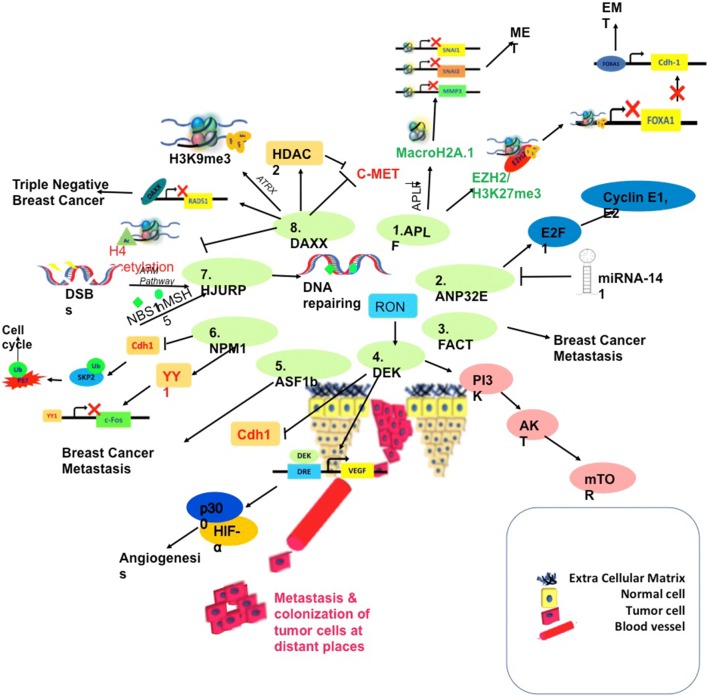Fig. 2.
Histone chaperone landscape of breast cancer metastasis. (1) APLF downregulation causes recruitment of repressive histone MacroH2A.1 in the promoter of mesenchymal genes like SNAI1, SNAI2 and MMPs, thereby promoting MET. Another pathway by APLF is showing, how repressive histone mark EZH2/H3K27me3 is recruited in the promoter region of FOXA1. In absence of FOXA1, CDH1 stops transcribing, thus pushing the cell towards EMT. (2) In ANP32E over-expressed cells, cell cycle regulator E2F1 causes upregulation of Cyclin E1/E2 therefore leading the cells to cell cycle. However, ANP32E itself is regulated at the transcript level by mi-RNA-141. (3) Over-expression of FACT has been associated with Breast Cancer Metastasis. (4) DEK has been found to directly inhibit CDH1, thus causing EMT. DEK also promotes angiogenesis by binding to DRE (DEK Response Element) in the VEGF promoter and recruiting p300 and HIF-α. Another pathway is showing how DEK induces metastasis via PI3K/AKT/mTOR pathway. (5) ASF1B is found to be upregulated in breast cancer metastasis. (6) NPM1 causes c-FOS suppression via YY1 expression. NPM1 also upregulates CDH1 levels, which causes SKP2 degradation, leading to p27KIP1 ubiquitination, thereby inducing breast cancer proliferation. (7) DNA Double Strand Breaks (DSBs) causes recruitment of ATM, which phosphorylates HJURP. HJURP along with DNA repairing protein hMSH5 and NBS1 repairs the DNA. (8) DAXXX inhibits c-MET [proto-oncogene] directly as well as via HDAC2 recruitment. DAXX binds to the promoter region of RAD-51 and forms repressive mark. However in breast cancer metastasis, downregulation of DAXX is found which causes over-expression of RAD-51 and the entire process corroborates the metastatic phenomenon

